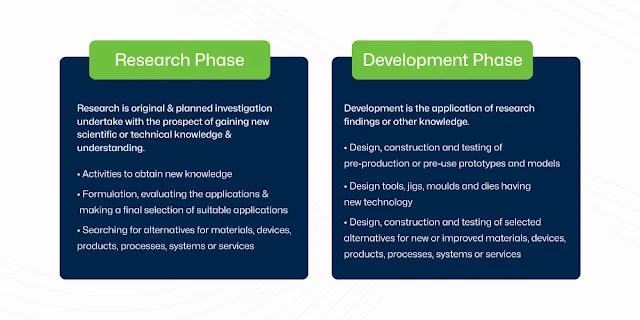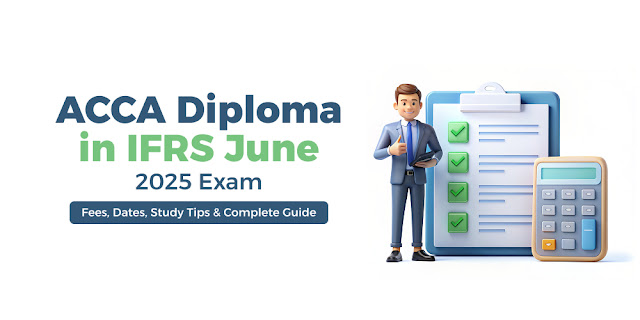IAS 38 Made Simple: Recognition of Intangible Assets for ACCA DipIFR Students
Background
In previous blog we had seen what property, plant and
equipment (PPE) is and its recognition and initial measurement principles under
International Financial Reporting Standards (IFRS) as per IAS 16 – PPE. In this
blog we will understand accounting for an equally important resource or asset
for a business, however, which does not have physical substance, called as
intangible asset. Intangible assets cannot be seen or touched because they lack
physical substance for e.g. brands, copyrights, patents, trademarks, trade
names, Customer relations etc. Intangible assets are crucial for businesses in
some sectors because they provide competitive advantage, innovative
capabilities and long-term value, in the business.
IAS 38 – Intangible assets under IFRS framework provides the detailed accounting for such
intangible resources. It provides in depth guidance on the topics like which
resources can be considered as intangible assets (IA), when entity is eligible
to recognise IA in the financial statements, how to measure that initially i.e.
measurement basis (viz. cost) and which expenses incurred will be included as a
part of the cost of an asset (for e.g. borrowing costs, directly attributable
costs etc.), how to measure assets on subsequent reporting date, i.e. measurement
basis (cost or revaluation model), how to determine the asset’s useful life,
amortisation methods, impairment of those assets etc.
For students pursuing a Diploma
in IFRS, or ACCA FR or ACCA SBR,
having in depth knowledge on IAS 38 is fundamental just like having knowledge
on IAS 16 – PPE. This standard provides accounting of intangible assets and
helps in better analysing the financial statements of any entity. It is vital
for ensuring accurate and reliable financial reporting, which in turn enhances
the credibility of an entity’s financial statements.
In this blog, we will discuss about
recognition principle of intangible assets as per IAS 38 under IFRS framework
which are bit different from tangible assets. We already had covered initial
measurement principle of IA as a part of our previous blog along with PPE.
Definition
of Intangible Asset: IAS 38 defines Intangible Asset as:
Intangible
Asset is:
· Without a physical substance.
As the resource is not tangible or visible,
its existence can be felt only if it is identifiable by some or the other way. Hence,
identifiability is the most important criteria for an invisible resource to be
called as intangible asset. For an intangible asset to be
identifiable if must satisfy either of the two conditions mentioned below:
Non-monetary asset is an asset which
does not have fixed or determinable contractual cash flows.
Without
physical substance:
·
·
We
will understand the concept of intangible assets with the help of couple of
examples:
Example
1:
Entity ‘Oxytel’, is in
telecommunication sector and has a wide distribution network which requires
regular upkeep. Oxytel maintains maps
of the entire network in a soft form which enables maintenance
team to locate the assets that form the system. Oxytel has incurred substantial
cost in developing these maps. These maps are of specific use to the Oxytel and
thus cannot be sold and transferred in any form to any other entity. Also,
Oxytel can seek a legal action in case of unauthorized use of these maps by any
other company. Question arises as to whether
Oxytel can consider these maps as an intangible asset?
In order to call maps as intangible
assets, we need to first evaluate whether maps are identifiable resources.
Although the maps are not separable from the entity, management has control
over the intellectual property that maps represent. Third parties do not have
permission to use the maps as it will lead to copyright issues. Thus, maps being an intellectual property arises from the other legal rights. Economic benefits
will flow to the entity in the form of savings in maintenance costs that the
entity will experience from having access to the maps. The costs incurred to
develop the map may therefore be regarded as an intangible asset.
Example
2:
Prohealth Limited is a successful
Pharma company. By providing innovative and quality products, Prohealth has
achieved a market share for its products of about 30%. Prohealth Limited is
thinking of recognising an intangible asset for this market share. Can
Prohealth Limited consider such market share as an intangible asset?
Market share does not meet the
definition of an intangible asset because it is not resource which is
controlled by an entity. Further, it is not separable, and it does not arise
from legal rights.
Recognition
To recognise IA, all the below conditions must be
satisfied:
Notes:
· Meaning of ‘Probable’ is ‘more likely than not’ (provided under IFRS framework).
· that can be measured reliably includes the costs incurred till date and costs that will be incurred in future for its acquisition or construction.
· case of externally acquired intangible asset, ‘probability of future economic benefits’ criteria is assumed to be satisfied.
· entity can calculate fair value of such intangible asset, ‘reliable measurement of costs’ criteria is also assumed to be satisfied.
Sometimes it is difficult to assess
the recognition of internally generated intangible assets in the books. For
e.g., expenses incurred on research and development activity may not be
recognised as intangible assets because of the fact that:ncurred on R&D activity will
generate future economic benefits, and if yes then from when it will generate
such economic benefits. Research activity may or may not be completed
successfully and raises significant uncertainties over probability criteria.
· Even if the probability criteria is met by few internally generated assets, determining the cost incurred reliably may be difficult. This is because, many times cost of generating intangible asset internally cannot be distinguished from the costs of running day-to-day operations or maintaining or enhancing entity’s internally generated goodwill. For e.g. generating customer lists or a brand value can be called as intangible assets which has probability of future economic benefit, however, determining the costs or expenses that incurred to develop brand or customer list is not possible because these are the output of running day to day business over the years.
Thus, to assess the recognition
criteria for internally generated intangible assets, following activity is
required:
The process of generating an intangible asset
is divided in to:
Research Phase
No
intangible asset arising from research shall be recognised. Expenditure on research shall be
recognised as an expense when it is incurred. This is because research phase
cannot demonstrate that an intangible asset exists that will generate probable
future economic benefits. Therefore, this expenditure is recognised as an
expense when it is incurred.
Development Phase
An intangible asset arising from
development shall be recognised if, and only if, an entity can demonstrate all of the following:
·
·
·
·
·
·
Treatment of research and development
expenditure in Summary
Let us understand the recognition of intangible asset
with the help of one example.
Example
3:
Bijoy Sales Private Limited (‘BSPL’), a
wholesale supplier in a consumer markets sector, has been in the market for
many years and has developed a list of customers with which it currently
transacts. The customer list prepared by ‘BSPL’ is large and complete in terms
of information about the customers. Management of ‘BSPL’ considers that the
list has a significant value.
‘BSPL’ also acquires a medium-sized
competitor that also has a large customer list with information such as name,
address, contacts and average purchase amount. The customer list has a value,
and management could sell it to third parties. Its fair value can be measured
reliably and there are no substantive legal reasons that preclude client
information from being exchanged or traded.
The entity should recognise the customer list
acquired in the business combination as an intangible asset, provided its fair
value can be reliably measured. The ability to sell the customer list or to
exchange it provides evidence that it is separately identifiable from the
goodwill arising in the acquisition.
The entity may not, however, recognise an
intangible asset for the internally generated customer list despite the fact
that it clearly has satisfied the control criterion. Ind AS 38 specifically
prohibits an entity from recognising internally generated intangible assets
other than development expenditure that meets the conditions in the standard
for recognition. This is because the cost of the customer list cannot be
distinguished from the cost of developing, running and maintaining the business
as a whole.
So, as the use and importance of intangible assets
continue to grow, staying up to date with IAS 38 and its application is key to
maintaining strong and compliant financial practices. Whether you are working
through your DipIFRS
exam or applying these standards in a professional
context, a solid understanding of intangible asset recognition will serve as an
invaluable asset in your career.
Thank you for reading this article. Stay Tuned to our
next blog!







Comments
Post a Comment